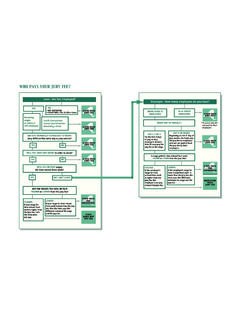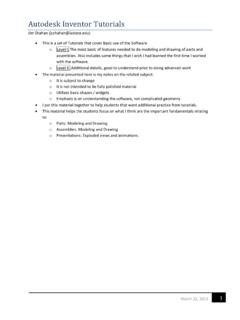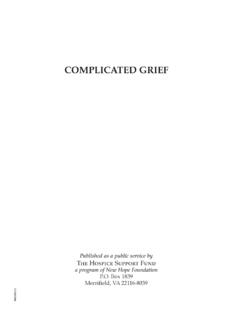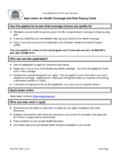Transcription of Transdisciplinary higher education curriculum: a ...
1 Research in higher education Journal Transdisciplinary higher education , Page 1 Transdisciplinary higher education curriculum : a complicated cultural artifact Eunsook Hyun University of Massachusetts Boston ABSTRACT The author discusses higher education curriculum as a cultural artifact reflecting human knowledge, which is also continuously shaped by the needs and demands of contemporary society. The Transdisciplinary approach and the call for a paradigmatic shift to a Transdisciplinary curriculum and research engagement are introduced as part of the academy s social responsibility.
2 Keywords: Transdisciplinarity, Transdisciplinary higher education curriculum , Cultural Artifacts Research in higher education Journal Transdisciplinary higher education , Page 2 INTRODUCTION Artifacts are products of the activities and conceptions of humans. Each artifact represents an epistemology of its historical context. Culture is the artifact that reflects human knowledge and activities, both of which are artificial products. It is constantly shaped by a body of learned behaviors common to a given society.
3 Simultaneously, culture shapes collective ways of knowing, behavior, values, beliefs, and consciousness as well as meaning-making, decision-making, and problem-solving approaches and perceived reality from generation to generation. The relationship between what is taught and what is learned is not absolute because some of what is taught is lost through intersubjectivity or generational amnesia while new discoveries continuously result from human activities and emerge from agencies such as universities; therefore, culture exists in a constant state of flux.
4 In a human culture, members of the society must agree to epistemological relationships between a word, behavior, or other symbol and its corresponding significance or meaning. To the extent that culture consists of systems of meaning and meaning-making, it also consists of negotiated agreements and its processes (Hyun, 2006b; Miraglia, Law, & Collins, 1999) ( , in the higher education setting the process of reviewing new scholarship of discovery either to accept or dispute knowledge). The university is the most legitimized social agent creating, discovering, conveying, disputing, accepting, and disseminating epistemology and its agreement process.
5 The university, an institutional organization, is a cultural artifact. Among the most traditional of all institutions, it has been known as the one most responsible for changes in human history (Seymour, 1988). Within the parameters of the university, curriculum is the center of reasoning, the artifact of the university. Consequently, higher education curriculum represents the characteristics of the university that are continuously influenced by external, internal, and organizational aspects (Hyun, Kretovics, & Crowe, 2006; Stark & Lattuca, 1997).
6 External influences: transcultural global phenomena, globalization, laws, history, policies, wars, demographic changes, technology, economy, geopolitically engineered grants, natural disasters, the desires of the public, the needs of the human community, accreditation, etc.; Internal influences: faculty grant-seeking behaviors and research activities, teaching, curriculum content, pedagogical practice, student learning, faculty socialization and social-cultural capital, identity and disciplinary orientation of the faculty, etc.
7 ; Organizational influences: formation of academic departments, degree-granting programs, Carnegie Units and credits, academic majors, scheduling, the structure of the academic unit that is single disciplinary, interdisciplinary, multidisciplinary, or Transdisciplinary , etc. In particular external influences have directly shaped the course of change in internal and organizational curriculum matters of modern-day higher education institutions ( Conceptualizing, 2005; de Wit, 2002; Hyun, 2010; Liberal, 2005; Lucas, 1994; Rudolph, 1977; Transforming, 2002; U.)
8 S. Department of education , 2006). If curriculum is the center of reasoning in the university, questions to explore might be What is curriculum ? What does the curriculum do to individuals and human society? and Why is an infusion of Transdisciplinary curriculum and research into academic affairs an inevitable consideration? Research in higher education Journal Transdisciplinary higher education , Page 3 curriculum curriculum Is and Does As discussed in Hyun s work (2006a), the term curriculum means different things to different people, each with its own form and purpose.
9 In other words, every representation of what curriculum is and does signifies a cultural-historical choice about how to approach the education of learners ( , see endnote 1) for the society. Educators who engage in discussions about curriculum too often fail to define it as much more than content knowledge to be taught and learned (Stark & Lattuca, 1997). What is curriculum ? What is it supposed to do or accomplish? What does curriculum have to do with human learning individually as well as collectively? Is it a scope-and-sequenced-based academic plan?
10 Is it a representation of our cumulative wisdom that some authorities believe all students should acquire? (Bennett, 1984, 1995, 1997; Cheney, 1989; Hirsch, 1987). Is it a set or series of intended learning outcomes? (Goodlad 1966; Tyler, 1949). Is it a collective expression of what is important for students to know and experience? (Johnson, 1967, 1977). Is it a set of courses offered to students? Is it the content of specific disciplines? Is it a contextualized timeframe within which teachers provide education ? Is it a series of experiences that will lead to the healthy growth of an individual?
















